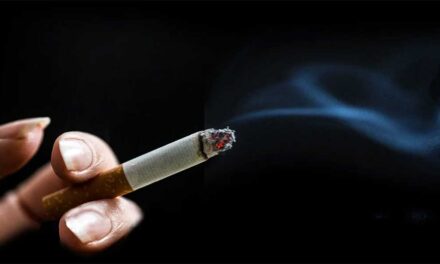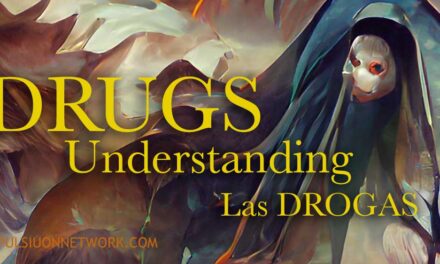What is LSD? ENGLISH
What is LSD?
LSD Lysergic Acid Diethylamide also known as Acid, garlic, tripi, cardboard, ticket, microdot, drop this is the most powerful psychedelic that has been discovered, since in very small amounts it can cause very intense effects. This group of substances are also erroneously called hallucinogens.
Their presentations are diverse, the most common being blotter sheets that cut microdots or liquid solutions of different concentrations into small squares. It is usually ingested orally but can be absorbed through the skin and must be handled with care.
What are its effects?
The effects of LSD produce a series of sensory alterations that are often called travel because the experience seems to transport you to other places. This can be separated into four stages:
The onset: Around 30 minutes after ingestion, some changes begin to be felt, colors appear brighter, sounds are perceived differently, and the body may present various strange sensations such as tingling and tremors.
The rise: Throughout the first 2 hours after ingesting it, the effects intensify and there are visual distortions, different visions, geometric patterns and a great change in the way of thinking. Depending on the dose, interacting with other people or maintaining awareness about what is happening around you can be complicated.
The climax: Depending on the dose, this state can be an extension of the previous one (if the dose is not very large) or it can become a deep experience of introspection and very intense mental visualizations.
It can be uncomfortable or even scary for inexperienced people so it is important that if you are looking to experiment or are trying a new material you only use half a dose.
The lowering: The effects gradually diminish after between 6 and 8 hours and a certain degree of alteration is maintained that does not disappear until you sleep. It is very important to get a good night’s sleep after an LSD trip as this allows the brain to normalize its functions.
Is LSD Addictive?
LSD does not generate any type of physical dependence, even a high tolerance is quickly formed that prevents it from being consumed frequently. However, it can generate a psychological dependence that can lead to very strong distortions of reality and various conditions such as paranoia and depression. It is important to have respect for your body, your mind and the substance. It should not be used carelessly, excessively, under pressure from other people, or as a way to avoid reality.
What to do if someone is having a bad trip?
Try to keep the person comfortable in a nice, quiet environment.
Look for a close and trustworthy person to talk to him or her without bothering him. It is important to do in a calm way that everything will pass in a moment, that the effect is temporary and there is nothing to worry about.
LSD does not have toxic properties so there is no overdose as such, but if someone has very strong physical discomfort, it is likely that what they took was not LSD or was mixed with something else, so it is important to ask for help if discomfort increases or if not reduced within a couple of hours.
Legality
Under the international regulatory framework, Mexican laws and specifically the General Health Law, LSD is considered an illegal narcotic and its distribution and production is considered a crime. Under the new drug dealing law, it is allowed to carry 0.015 milligrams of LSD for personal use.
However, it is very difficult to determine how much LSD is in a square, a drop or a microdot, so even a single dose can contain more than this measure.
Remember that a normal dose in a box is 35 to 100 micrograms (µg).
One drop usually brings more, but it is usually not more than 150 or 200 µg. (1 mg = 1000 µg)
Damage reduction
Most importantly, keep in mind that the nature of the experience will be determined by the dose, the setting, and your mental, emotional, and health situation. Taking care of these aspects, the trip can be enriching and interesting. On the contrary, if the context, the company or personal situation are not the best, it can become an uncomfortable or difficult experience.
Although its effects are temporary in regular cases, LSD can trigger pre-existing conditions related to mental health in some people causing permanent alterations. It is important to take into account a family history of psychosis, schizophrenia, or other diagnosed mental disorders.
LSD produces very strong alterations so you should not drive or operate any type of machinery under its influence, nor should you try to make important decisions or get into difficult situations where you need to act in a certain way or perform specific activities. It is common, even in people who use the substance regularly, to have anxiety or panic attacks, especially if the doses are increased. For this reason it is good to be in a quiet place with good ventilation and without many people around, it is also recommended that there be someone who does not consume anything when you are going to have a session with high doses, in case of an emergency. Remember that the word psychedelic means “that manifests the soul or the mind” so the more you prepare, prepare the trip and prepare your mind (taking care of its content), the less risk there will be that you will live a bad experience.
¿Qué es el LSD?
El LSD Dietilamida de Ácido Lisérgico tambien conocido como Ácido, ajo, tripi, cartón, ticket, micropunto, gota este es el psiquedélico más potente que se ha descubierto, ya que en cantidades muy pequeñas puede provocar efectos muy intensos. Este grupo de sustancias también son erróneamente llamados alucinógenos.
Sus presentaciones son diversas, siendo las más comunes las planillas de papel secante que se cortan en pequeños cuadritos los micropuntos o disoluciones liquidas de diferentes concentraciones. Por lo general se ingiere oralmente pero se puede absorber a través de la piel por lo que se debe manejar con cuidado.
 ¿Cuáles son sus efectos?
¿Cuáles son sus efectos?
Los efectos del LSD producen una serie de alteraciones sensoriales a las que muchas veces se les llama viaje debido a que la experiencia parece transportarte a otros lugares. Esta puede separarse en cuatro etapas:
El inicio: Alrededor de 30 minutos después de ingerido se empiezan a sentir algunas alteraciones, los colores parecen más brillantes, los sonidos se perciben diferentes y el cuerpo puede presentar diversas sensaciones extrañas como hormigueos y temblores.
La subida: A lo largo de las primeras 2 horas después de ingerirlo, los efectos se intensifican y se presentan distorsiones visuales, diferentes visiones, patrones geométricos y un gran cambio en la manera de pensar. Dependiendo de la dosis se puede complicar la interacción con otras personas o el mantener conciencia acerca de lo que está pasando a tu alrededor.
El clímax: Dependiendo de la dosis este estado puede ser una extensión del anterior (si la dosis no es muy grande) o puede volverse una experiencia profunda de introspección y visualizaciones mentales muy intensas.
Puede ser incómodo o incluso aterrador para personas no experimentadas por lo que es importante que si buscas experimentar o estas probando un nuevo material utilices sólo media dosis.
La bajada: Los efectos se van reduciendo poco a poco después de entre 6 y 8 horas y se mantiene un cierto grado de alteración que no desaparece hasta que duermes. Es muy importante dormir bien después de un viaje LSD puesto que esto le permite al cerebro normalizar sus funciones.
¿Es adictivo el LSD?
El LSD no genera ningún tipo de dependencia física, incluso se forma rápidamente una alta tolerancia que impide que se pueda consumir frecuentemente. Sin embargo puede generar una dependencia psicológica que puede llevar a distorsiones muy fuertes de la realidad y diversas condiciones como paranoia y depresión. Es importante tenerle respeto a tu cuerpo, a tu mente y a la sustancia. No se debe utilizar descuidadamente, en exceso, por presión de otras personas o como una forma de evadir la realidad.
¿Qué hacer si alguien está teniendo un mal viaje?
Trata de mantener a la persona cómoda en un entorno agradable y tranquilo.
Busca que una persona cercana y de confianza hable con él o ella sin incomodarle. Es importante hacer de una forma calmada que todo pasará en un momento, que el efecto es temporal y no hay de qué preocuparse.
El LSD no tiene propiedades tóxicas por lo que no existe una sobredosis como tal, pero si alguien presenta molestias físicas muy fuertes, es probable que lo que haya tomado no fuera LSD o estuviera mezclado con algo más, por lo que es importante pedir ayuda si el malestar aumenta o si no se reduce en un par de horas.
Legalidad
Bajo el marco regulatorio internacional, las leyes mexicanas y específicamente la Ley General de Salud, el LSD está considerado como un narcótico ilegal y su distribución y producción se considera un delito. Bajo la nueva ley de narcomenudeo se permite portar 0.015 miligramos de LSD para uso personal.
Sin embargo, es muy difícil determinar cuánto LSD contiene un cuadrito, una gota o un micropunto, por lo que aún una sola dosis puede contener más que esta medida.
Recuerda que una dosis normal en un cuadrito va de los 35 a los 100 microgramos (µg).
Una gota por lo general trae más, pero no suele ser más de 150 o 200 µg. (1 mg. = 1000 µg)
Reducción de daños
Lo más importante es tener en cuenta que la naturaleza de la experiencia será determinada por la dosis, el entorno y tu situación mental, emocional y de salud. Cuidando estos aspectos, el viaje puede ser enriquecedor e interesante. Por el contrario, si el contexto, la compañía o situación personal no son las mejores, éste se puede transformar en una experiencia incómoda o difícil.
A pesar de que sus efectos son temporales en casos regulares, el LSD puede desencadenar condiciones pre-existentes relacionadas con la salud mental de algunas personas provocando alteraciones permanentes. Es importante tomar en cuenta el historial familiar de psicosis, esquizofrenia u otros desórdenes mentales que se hayan diagnosticado.
El LSD produce alteraciones muy fuertes por lo que no se debe conducir u operar ningún tipo de maquinaria bajo sus efectos, tampoco se debe intentar tomar decisiones importantes o meterse en situaciones difíciles donde se necesite actuar de determinada manera o realizar actividades específicas.
Es común, aún en personas que usan regularmente la sustancia, tener ataques de ansiedad o de pánico, especialmente si se incrementan las dosis. Por esta razón es bueno situarse en un lugar tranquilo con buena ventilación y sin mucha gente alrededor, además es recomendable que haya alguien que no consuma nada cuando se vaya a tener una sesión con dosis altas, en caso de que haya una emergencia.
Recuerda que la palabra psiquedélico significa “que manifiesta el alma o la mente” por lo que mientras más te prepares, prepares el viaje y prepares tu mente (cuidando su contenido) menor riesgo habrá de que vivas una mala experiencia.

















